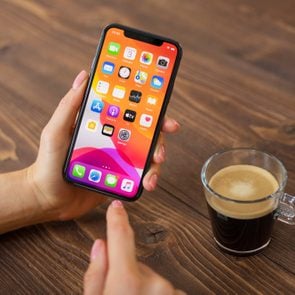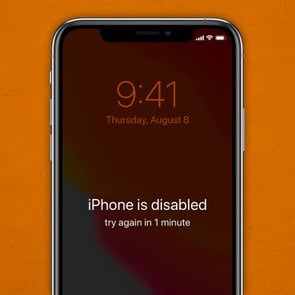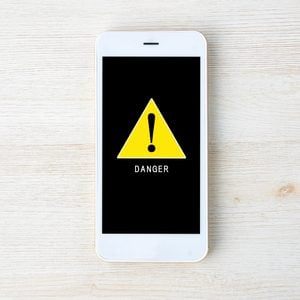How to Stop Your Phone from Overheating When It’s Hot as Heck Outside
Updated: Jul. 25, 2023
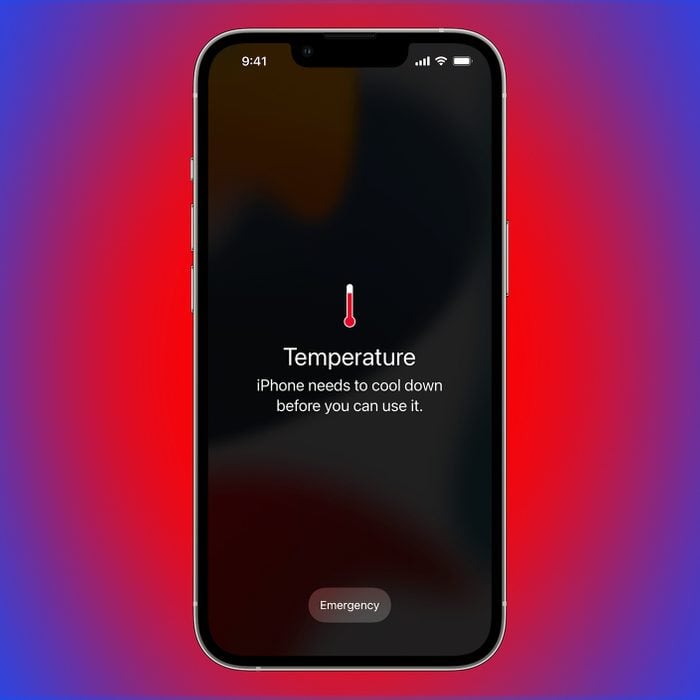
Summer heat can damage electronics. Here's how to cool down your phone—plus tips to help you prevent your phone from overheating when you're out in the sun.
As smartphones have evolved to pack more processing power into sleeker frames, they’ve also become increasingly susceptible to overheating. The consequences of overheating can be frustrating, leading to reduced performance, drained battery life and even unexpected shutdowns. But worry not! We’ve got information to help you understand what’s happening under the hood of your phone, including a breakdown of all the reasons your phone might be heating up.
We also have the advice you need to cool down your phone and prevent overheating in the first place. From optimizing your app usage to following proper charging practices, we’ll explore simple yet effective strategies to safeguard your phone from the clutches of excessive summer heat.
If you’re looking forward to enjoying some sun—without worrying about your phone suffering amid the rising heat index—keep reading. We’ve got everything you need to know to keep your pricey tech running cool on all your summer adventures.
Get Reader’s Digest’s Read Up newsletter for more tech, humor, cleaning, travel and fun facts all week long.
What happens to your phone when temps are soaring?
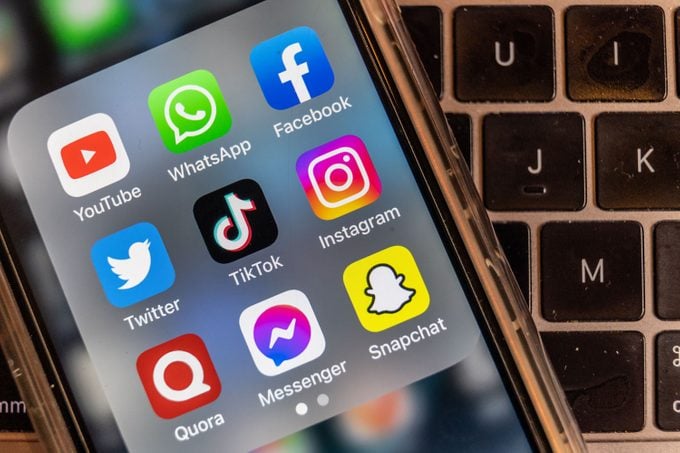
Modern smartphones are essentially small computers, and computer hardware generates heat. There’s no way around it. When a computer’s internal components get too hot, it can lead to various issues that affect its performance and longevity. Smartphones are arguably even more susceptible to this because they don’t have internal fans like most computers do, and they’re often outside more, given that we tend to carry them with us wherever we go.
Your phone is designed with built-in mechanisms to protect itself from excessive heat, such as copper heat sinks and software features that can automatically reduce power usage when the internal temperature reaches a certain point. Nonetheless, prolonged exposure to high temperatures can still cause problems. The issues below are just a few problems that can rear their heads when your phone gets too hot.
Reduced performance
High temperatures can cause the phone’s central processing unit (CPU) and graphics processing unit (GPU) to throttle down their performance to prevent overheating. While this is a good design feature that can protect your phone and prolong its life, the slowdown can result in reduced processing power and overall slower performance, affecting tasks like app loading, multitasking and gaming.
Battery drain
Heat can accelerate the chemical reactions inside the phone’s battery, causing it to drain faster. As the battery temperature rises, its capacity diminishes temporarily, and it won’t hold a charge as effectively. It can also reduce the battery’s overall lifespan, meaning it may need to be replaced sooner.
Shutdowns and restarts
In extreme cases, when the phone’s internal temperature becomes dangerously hot, it may shut down or restart itself to prevent further damage. This behavior is a protective measure to avoid permanent hardware failure. But while it’s a good feature, it can also be disruptive and annoying. Ideally, it’s best to prevent your phone from getting that hot in the first place.
Screen and internal component damage
Prolonged exposure to high temperatures can damage the phone’s display, internal components and battery. Examples of overheating damage include screen discoloration, touch sensitivity issues and similar hardware malfunctions.
Reduced lifespan
Frequent exposure to high temperatures can reduce the lifespan of your phone’s battery and other internal components. This can lead to degraded performance, making the phone less reliable over time. And, of course, it could result in costly repairs or the need to shell out the cash for a new phone sooner than you otherwise would have.
What are some other reasons your phone may be overheating?
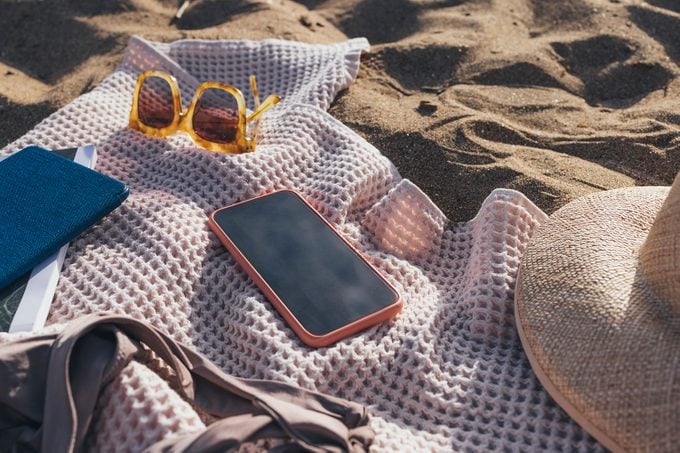
Exposing your phone to high temperatures—say, bringing it to the beach on a hot summer day—can lead to overheating. But that’s not the only reason your phone may be too hot. Chelsea Ashbrook, digital experience manager at Genentech, says one of the primary reasons for a phone to overheat is having too many background applications open. “It is not uncommon for an iPhone app to crash,” Ashbrook says, “causing a constant feedback loop that ultimately leads your iPhone’s CPU usage to spike, leading to overheating.”
Damien Mason, a technical writer for ProPrivacy, says that having multiple apps open “causes the processor and RAM to work overtime, which inevitably strains the battery.”
Phones may also overheat if you haven’t cleared your web browser cache. “Excess files, cookies and cache force the iPhone to work harder to retrieve data, which can result in overheating,” Ashbrook says.
It’s also possible that apps may be running in the background without your knowledge. Familiarize yourself with phone apps that could be spying on you, and learn how to delete iPhone apps.
Using outdated hardware or software can also lead to your phone overheating, as can some user habits, like leaving it plugged in most of the time.
How to cool down your phone
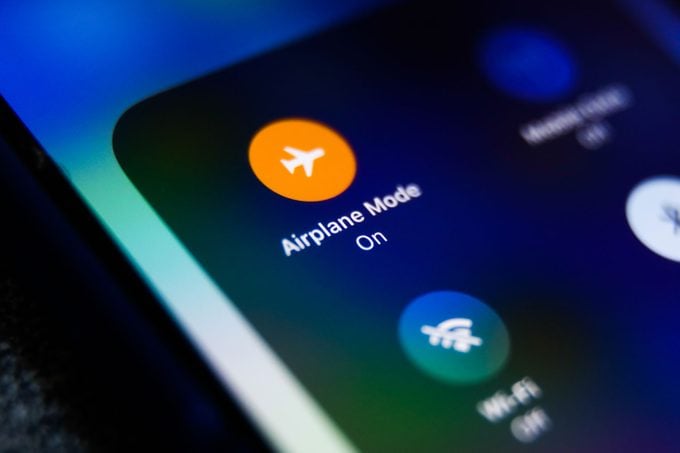
If you’re dealing with an overheating phone, it’s important you take steps to cool it down. The strategies below are a smart place to start.
Take your phone out of the heat
You might like sunbathing, but your phone does not. “Most modern smartphones have internal temperature sensors,” says Tom Paton, founder of Green Smartphones. “When they begin to get too hot, your phone might give you a push notification, warning that it’s overheating. If the temperature rises further, the phone will likely switch itself off to prevent damage to the processor and other components. Even brand-new phones with really good thermal management can’t withstand more than 10 minutes of use in direct sunlight on a 100-plus degree day.”
If your cell phone overheats due to high temperatures, Paton says the best way to cool down your phone is to “take it inside, ideally somewhere with air conditioning, and stop using it until it cools down. This should take about five to 15 minutes.”
Just don’t resort to more serious cooling methods. “Whatever you do, never put your phone in the fridge or freezer,” Paton warns. “Sudden temperature changes and condensation can very easily damage your phone.”
Close your apps
Having too many apps open is a major reason your phone may be getting hot. “Simple physics explains this reason,” says Ben Hartwig, web operations executive at InfoTracer. “If the user is on the phone all day long, and if multiple apps are running simultaneously, high use of the processor and the electrical chips within the phone generate heat.”
Keeping apps open forces your battery to work harder, which may result in the phone overheating and the need to cool it down. It’s even worse if your apps aren’t updated.
Stop charging your phone so much
“Overcharging is another usual cause of overheating, so once your phone reaches 100% charge, be sure to unplug it,” says Eloise Tobler, a smartphone expert at Wisetek Store. “Otherwise, your phone will just begin to build unnecessary charge, which generates excess heat.”
Your device isn’t getting the rejuvenation it needs if you use it while it’s plugged in. “Using your phone while simultaneously charging it is called ‘pass-through charging,’ which heats up phones dramatically,” explains technology expert Nick Wolny.
Instead of charging your phone longer, learn how to charge your phone faster.
Remove your phone from its case
Just like taking off layers of clothing can cool you down, removing the case from your device will help cool down your phone. “Many cell phone cases don’t have good airflow and can cause your phone to overheat quickly,” says Josh Wright, CEO of CellPhoneDeal.
“Beware of ‘life-proof’ cases that are heavily rubberized, as they can block vents and make it harder for our phones to cool down when in use,” Wolny says. Since our phones tend to heat up when they expend a lot of processing power, the devices must have clear channels to release this heat and regulate their temperature. Wolny recommends “stripping your phone” when it is outside in the heat or when it is powering multiple applications. Just be extra careful not to drop it when it’s not wearing this essential cell phone accessory!
Keep your phone away from other electronic devices
Molly White of UBreakIFix says it’s best to keep phones separate from your other tech. “Stacking your running phone, tablet and computer together in a bag makes them more susceptible to overheating,” White says. “Keep them separate to help keep them cool.”
Turn on airplane mode
White also suggests using airplane mode if you need to cool down your phone. “If your phone has low or no signal, it may be working overtime searching for a connection, which can lead to your phone warming up,” she says. “Turn on airplane mode until you’re back in an area with coverage.”
Turn off your phone
If all else fails, one of the best phone hacks is to simply turn it off. According to Will Manuel, president and CEO of mobile app and website development agency Core Mobile Apps, leaving your phone powered down for 30 to 60 seconds can help “the heat to dissipate within the phone and reset some of the memory-intensive processes that may have been causing the phone to overheat.”
“A simple restart will often cool off the phone in no time at all,” says Bill Mann, a privacy expert at Restore Privacy. “It’s like giving the phone a little break and letting it breathe for a minute or two before using it again.”
How to prevent your phone from overheating
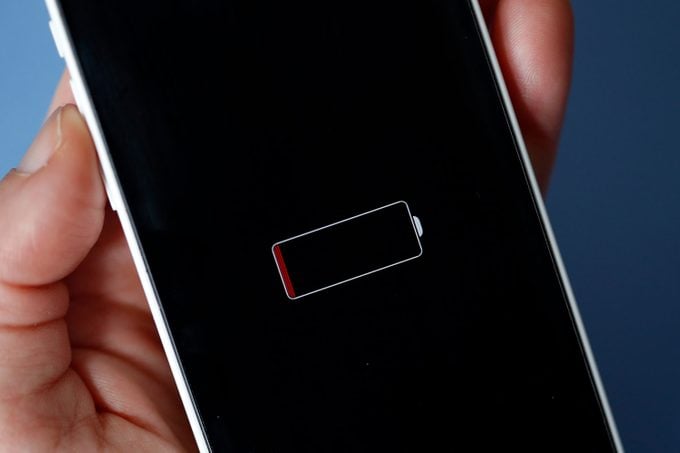
What’s better than cooling down an overheated phone? Preventing your phone from getting too hot in the first place. These steps will help you avoid the dreaded overheating phone.
Keep it out of the heat
Probably the No. 1 thing you can do is keep your phone away from heat sources. “If you do insist on taking your phone to the pool, investing in a heat-resistant pouch or case could be worth the money to try and keep the phone cooler,” suggests Sarah McConomy, COO of SellCell. “Remember, phones are designed to shut down after they reach a certain temperature as a preventive measure to avoid too much damage.”
Avoid resource-intensive tasks in hot environments
CPU-intensive activities like gaming or running complex apps can heat the phone. Try to perform such functions in a cooler environment or limit their usage when the phone is warm.
Stay updated
Not only do you need to keep your operating system updated, but you also need to make sure you’re running the latest version of your apps. “If mobile apps aren’t updated, they require higher use of RAM and processors,” Hartwig says.
One of the best things you can do for your phone is update it and its apps.
“New software and updates are produced regularly, and each update increases the minimum hardware requirements for the phone to run smoothly,” says Ajinkya Mishra, consumer tech expert at DevsJournal. “Old hardware can struggle to meet the requirements of new software, and even simple tasks such as sending emails can start overheating your phone.”
Use the right charger
Another way to avoid overheating is to use a charger from a reputable manufacturer that is compatible with your device. “If you shelled out over $1,000 for the newest Apple iPhone, I hope you also shelled out for the $20 Apple Lightning USB cable,” says tech expert Jessica Naziri, founder of TechSesh.
Naziri recommends using only official name-brand chargers that come with the electronic device. “Cheaply made chargers are usually not manufactured correctly and will have all types of issues, including exposing your phone to increased temperatures,” Naziri says. “There are chips close to the plastic cover of a charger for a reason, and that reason is to help the heat escape easier. Often the fake ones are poorly made, with cheaper chips.”
Charge your phone wisely
Charging your phone in a cool, well-ventilated area reduces heat stress on both the battery and the phone’s internal components.
That’s not the only thing you can do for your phone while charging, though. To further reduce heat, avoid using your phone while it’s charging—that can generate additional heat and stress the battery. Let your phone charge without multitasking to minimize heat buildup.
Turn off Bluetooth
Turning off Bluetooth—especially if there’s nothing to connect to—will prevent your phone from overheating too. “If Bluetooth is on but the phone isn’t connected to a device, it will constantly scan for something to connect to,” says White. “This can cause the phone to warm up.”
While you’re at it, turn off other unused connectivity features: Wi-Fi and mobile data can contribute to heat buildup too. If you’re not using these features, turning them off can reduce unnecessary power consumption and heat generation.
Adjust your brightness
White also suggests turning down the screen brightness on your phone. “Turning your screen brightness up will force your battery to work harder and create more heat,” she says. “Lower your screen brightness and consider shortening the screen timeout duration to keep your screen from being on for unnecessarily long periods of time. Also look into an anti-glare screen protector—it can help you see your phone’s screen in the sun so you won’t have to turn up the brightness.”
Power down unnecessary apps
Running multiple apps can strain the phone’s CPU and GPU, generating more heat. Closing or force-quitting unused apps reduces the workload on the processor and helps keep the phone’s temperature in check. It’s a smart step regardless of whether you’re aiming to prevent heat buildup or cool down an already hot phone.
Use a phone case with proper ventilation
Some phone cases can trap heat, leading to increased temperatures. That’s why it can help to remove the case when your phone is overheating. But to keep your device cool from the start, pick your case wisely.
Opt for cases that allow adequate ventilation and don’t obstruct airflow around the phone. It’s not a bad idea to buy a separate phone case specifically for use in the summer if your regular case doesn’t have good ventilation.
Restart your phone periodically
Restarting your phone can help clear out any temporary system issues and refresh the phone’s resources, which may aid in temperature management.
Consider using battery-saving modes
Many smartphones offer battery-saving modes that reduce background processes and screen brightness, helping to keep the device cooler during extended use.
Beat the heat
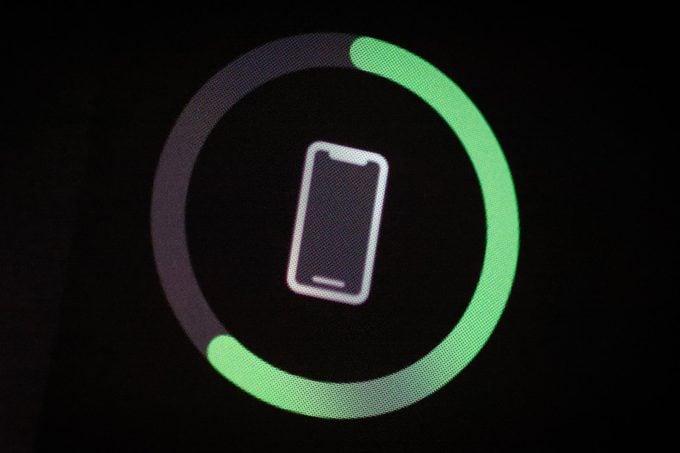
With a bit of awareness and caution, you should find it fairly easy to keep your phone’s temperature within reasonable limits. Preventing overheating is important if you want to avoid potential damage to the device’s hardware and battery that excess heat can cause. Keeping the phone cool ensures smoother overall performance and can greatly extend its lifespan, saving you money in the long run.
By understanding smartphone overheating and employing the above prevention techniques, you can ensure your device remains reliable and efficient when it’s out and about with you in the summer heat. A few simple precautions can go a long way in safeguarding your phone from costly damage and annoying performance issues.
Additional reporting by Jaime Stathis and Carley Lerner.
About the experts
- Chelsea Ashbrook works in corporate digital experience at Genentech.
- Damien Mason is a technical writer at ProPrivacy.
- Tom Paton is the founder of Green Smartphones.
- Ben Hartwig is a web operations executive at InfoTracer.
- Eloise Tobler is a smartphone expert at Wisetek Store.
- Nick Wolny is a technology expert.
- Josh Wright is the CEO of CellPhoneDeal.
- Molly White is a tech expert at UBreakIFix.
- Will Manuel is the president and CEO of Core Mobile Apps.
- Bill Mann is a privacy expert with Restore Privacy.
- Sarah McConomy is the chief operating officer of SellCell.
- Ajinkya Mishra is a consumer tech expert at DevsJournal.
- Jessica Naziri is a tech expert and the founder of TechSesh.

